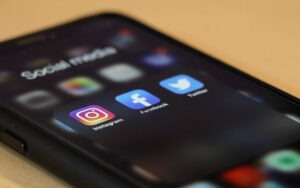
Do I really need to prove to you that mobile devices (i.e., smartphones and tablets) are an omnipresent part of our lives? Just look around you. The reality of mobile is most clear to me when I’m at Starbucks. Everyone in line is staring down at his or her phone. At tables, people are enjoying their coffee with their iPad or Kindle. If someone tells me that the mobile revolution isn’t already in full swing, I ask him two questions: Is global warming real, and did we really land on the moon? So far, not one of these mobile naysayers has said yes to both.
The rest of us know better, but knowing and doing are two different things, and nonprofits aren’t stepping up to the mobile challenge. One recent study from ZeroDivide found a dramatic lack of philanthropic investment in mobile strategies for community change.
“We’re doing about 96 percent of our work with organizations outside the U.S.,” said Katrin Verclas of MobileActive.org, a leading network and resource on the use of mobile technology for social impact. “Our experience is that, except for a handful of funders, there just isn’t awareness of the opportunities in mobile or much support for this work here yet.” Here’s why I think nonprofits aren’t connecting with mobile.
Nonprofits are overwhelmed. It seems almost every month some new demand is placed on them. First, you have to build a website. Then, you have to create an e-mail newsletter. Then, you have to join Facebook, Twitter, Foursquare, Instagram and, now, Pinterest. I wish I could tell nonprofits that focusing on mobile means they can ignore some of these other things. But that’s like saying fishing line works best without a pole. It doesn’t. As a recent Pew Internet study pointed out, social networks are the thread that is surrounding us with information from our many connections. Nonprofits get this, but what they’re not getting is that mobile is, and will increasingly become, the needle through which this thread is passed. The fabric of connectedness we hope to weave with social networks has to be stitched with the mobile needle. You can’t have one without the other. That’s why it’s so important for nonprofits to race to catch up with mobile technology.
Sign up for our free newsletters
Subscribe to NPQ's newsletters to have our top stories delivered directly to your inbox.
By signing up, you agree to our privacy policy and terms of use, and to receive messages from NPQ and our partners.
Nonprofits don’t know where to start. Admitting you have a problem is the first step. Knowing where to go for help is the second. Again, nonprofits are unsure of their footing. Everyone talks about mobile, but getting help understanding and using it isn’t easy, and a classic chicken and the egg story is unfolding. Publishers and educators are wary of mobile content. An editor at Wiley Publishing, the publisher of my two For Dummies titles, once told me that titles on mobile technology don’t sell. CharityHowTo.com, an online education site for nonprofits (full disclosure: I’m a presenter for them) isn’t convinced there’s a demand for webinars on mobile technology so they don’t offer them. Their curriculum is focused on sponsorship training, grant writing, silent auctions and Facebook. As nonprofits slowly awaken to the necessity of mobile, educators are waiting on the sideline for demand to rear its head. So we all wait, and nonprofits fall farther behind.
But some nonprofits are stepping up to meet the mobile challenge. To highlight the importance of birth control for those who are sexually active but not ready for children, Planned Parenthood of the Great Northwest distributed 55,000 condoms to colleges in western Washington state with QR codes that, when scanned with a mobile device, went to a site promoting safe sex called WhereDidYouWearIt.com. During National Condom Week in February (they really do have a week for everything, don’t they?), the site had 65,000 visitors and 4,500 check-ins.
There have also been nonprofit missteps with mobile technology. Chili’s Grill & Bar and St. Jude Children’s Research Hospital used a QR Code on coloring pages at Chili’s locations to activate smartphone users. Unfortunately, the QR Code opened a donation page that wasn’t optimized for mobile devices. Donors won’t flock to fill in a dozen tiny boxes with personal and credit car information on a 3.5-inch smartphone screen. There are better alternatives for giving on mobile devices. Still, you have to commend St. Jude for getting started with mobile technology and using it to draw in a corporate partner (Chili’s has committed to raising $50 million for the Memphis-based hospital by 2016).
More nonprofits need to model Planned Parenthood, and even risk missteps like St. Jude’s, to test and adopt mobile strategies. But they can’t do it alone. More companies, foundations and donors need to help nonprofits make the leap to mobile. Without the mobile needle to pass the thread of social media through, nonprofits risk being caught with their pants down.
Joe Waters blogs on cause marketing and social media at Selfishgiving.com. He’s the co-author of Cause Marketing for Dummies and is currently serving as a judge for the Atlantic BT Gives Back program, which will deliver a $25,000 grant in mobile technology and marketing services to a nonprofit organization.












